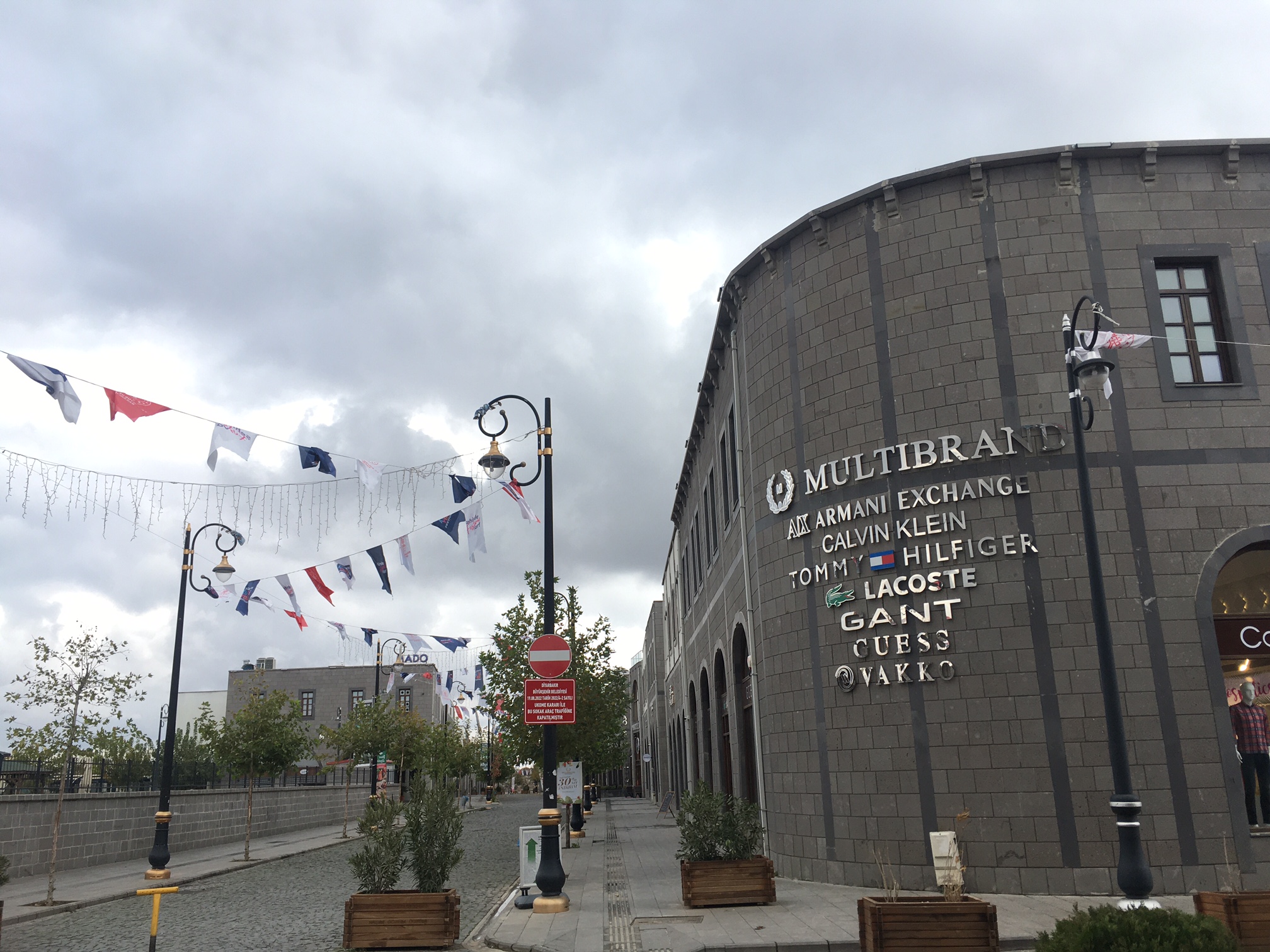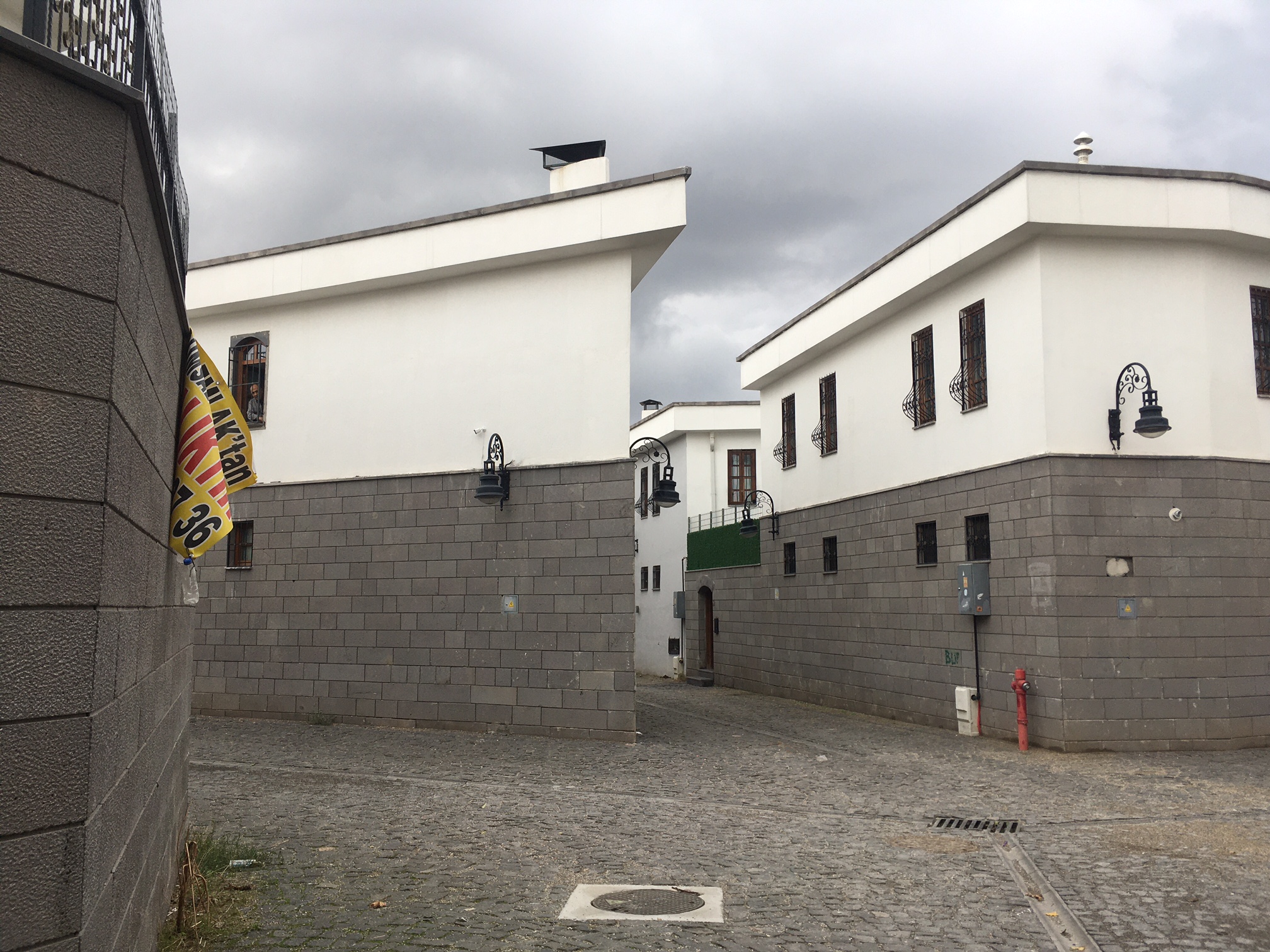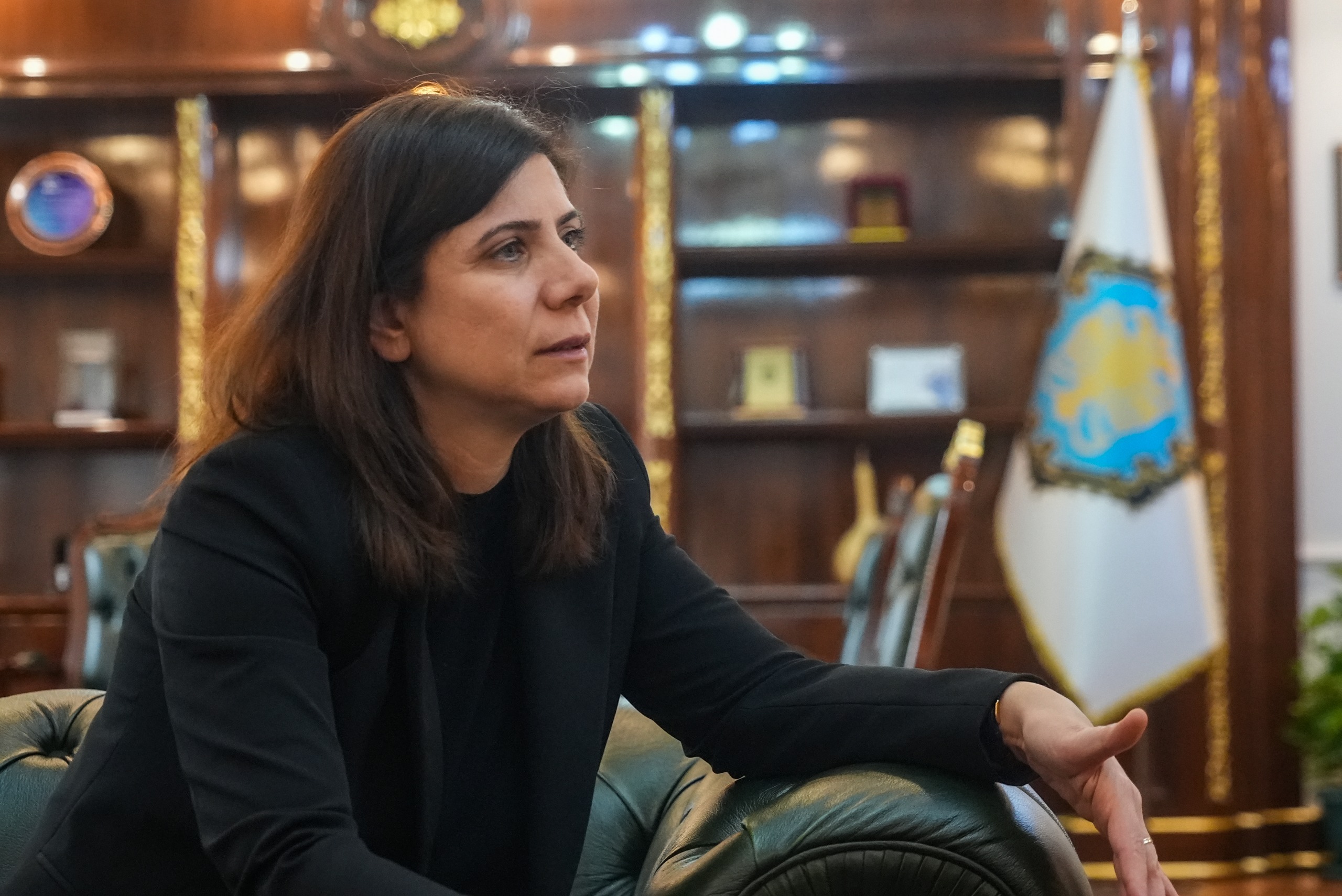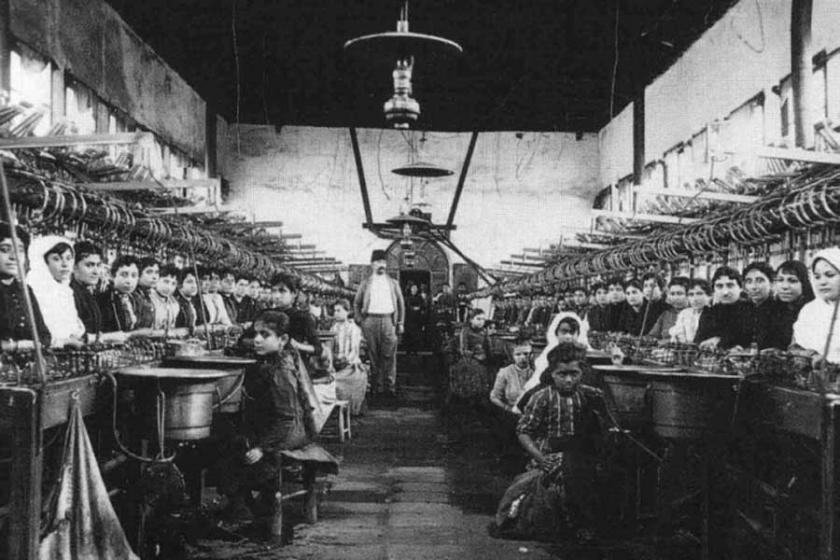I wander around Suriçi, using both my own testimonies and the memory provided to me by journalism by listening to witnesses and as a map. After a hundred days of conflict, the police barricades and screens that I last saw in 2019 have been removed from some streets that were closed for years. They have removed, but many of them seem to have opened neither to the old nor to the new, but to gaps that freeze space in time. As I wander around, I listen to the old inhabitants of Sur. One of them is a construction worker, he migrated to another district when his house was demolished. What is significant is that now, if there is a job in construction, he comes to his old neighborhood to work. Another is a plumber whose house, shop and tools were leveled in Sur. They are collectively paying installments to own a new Sur house.
Some of the hotel receptions and souvenir shops in Diyarbakır have maps of Suriçi. Touristic maps prepared with the familiar simple legends that you can put in your pocket and follow the churches, mosques, museums and bazaars so that you don't get lost in the city. Today, it is neither possible to recognise Suriçi, which was flattened after the conflict process that started after the end of the solution process in 2015, nor the new part of Suriçi, which was ‘Toledolised’ by expanding over the old one. There is no road to be found in Suriçi, there is no escape from getting lost, and there is no map to show it.
The main title of the fifth Diyarbakır Comparative Literature Days organised by Wêjegeh Amed (Diyarbakır Literature House), which took place between 15-24 November, was ‘Transforming City, Changing Literature’. Not only on the last three days, but throughout its well-planned and intensive programme, Kurdish and Turkish literature intersected with world literature, reached out to prisons, fed on philosophy, urban and political theories, and led to mind-opening sessions. This is an activity that has flourished within the structure of Lîs Publishing House and has been carried out with a dedication that arouses appreciation and gratitude, and with a struggle against material and moral difficulties. It is an important part of Diyarbakır's vibrant and fervent cultural life unlike any other city.
The truth on the film set
At the 5th Diyarbakır Days of Comparative Literature, it is not for nothing that many speeches, whether in Kurdish or Turkish, touched upon the theme of memory. Memory, the power of resistance against assimilation policies; memory, the nook where loyalty to the pain experienced is accumulated; memory, the skeleton that sustains individual lives. It is a globally verified fact that urban regeneration, which is at first glance thought to concern only urban space, provides an efficient template for the realisation of neoliberal economic policies and the ideological propaganda of the political power. Diyarbakır, especially Suriçi, stands in a special place in terms of showing how intertwined it is with the securityist understanding and militarist practice.
I wander around Suriçi, using both my own testimonies and the memory provided to me by journalism by listening to witnesses and as a map. After a hundred days of conflict, the police barricades and screens that I last saw in 2019 have been removed from some streets that were closed for years. They have removed, but many of them seem to have opened neither to the old nor to the new, but to gaps that freeze space in time. One street suddenly opens up into a giant mud puddle where a restoration sign for a historical building, a TOKİ construction site and a few ruins still bearing bullet marks intersect. If it were possible, two streets away they would merge with shops selling products from the world's leading luxury brands. As I walk around, I listen to the former residents of Sur over chats and tea. One of them is a construction worker, he migrated to another district when his house was demolished. What is significant is that now, if there is a job in construction, he comes to his old neighborhood to work. Another is a plumber whose house, shop and tools were leveled in Sur. They are collectively paying installments to own a new Sur house, they will pay for 15 years, they rented their house. He, too, has worked a lot in construction sites in Western cities, and tells his memories of the “tailed Kurdish” with a half-laugh. “Sometimes I think, are we such bad people? Am I bad because I am Kurdish?” he says.
From the end of the Four-legged Minaret, which cannot be passed without remembering Tahir Elçi, one reaches the new Suriçi. The part that is intended to be compared to Toledo. A glittering yet secluded street with double rows of exclusive cafes and shops. Entrance to the nearby Mar Petyun Chaldean Catholic Church is now chargeable. There are screens between the buildings, this time put up not by the police, but by commercial enterprises to serve as a backdrop for Instagram photos. The area behind the screens is empty. The film set feeling here is doubled in the section of two-storey houses just below, no one is even lost in the labyrinthine streets. Signboards of some associations, foundations and institutions close to the government stand out. The only living person I met is a woman in her 70s, one of the few families who moved here from Old Sur. They had to squeeze from a six-room house to a three-room house, they have a lot of debt, and there is nowhere even to buy bread. She complains about walking. As I round the corner, I can still hear the words “may them choke to death on our money.”
‘One flag, one nation, one sign’
Gazi Street, where many shops closed down after 2016, is alive like a functioning vein with groups of locals and local tourists. Someone makes fun of the signs that have been uniformised with the support of ministries and some municipalities: “One flag, one nation, one signboard.”
In the past, those wandering the narrow and small streets of Suriçi used to feel lost in the face of this beauty unlike any other. Even though the city grew up with some ugliness, the compasses would find their swinging when walking around Suriçi, which formed the core of its identity. I ask Serra Bucak, Co-Mayor of the Diyarbakır Metropolitan Municipality, about the transformed Diyarbakır. The anxiety caused by the possibility of a trustee being appointed at any moment has energised her to work even on weekends, not in a state of anxious indifference. She believes that the trustee policy that later became widespread and this tutelage process found its most symbolic meaning in Diyarbakır. The old, mostly poor residents of Sur had scattered to other parts of the city, and she says that they were following them. Bucak says that even the places that were not destroyed in the clashes were flattened afterwards, and that the de-identification of the city is a continuation of the assimilation policy. She associates the incentive given to capitalist tourism today with the desire to ‘conquer Sur’, which was mentioned at the time. She thinks that the city has always loved visitors and tourists, but the marketing of Diyarbakır as a tourism centre based on consumption, rather than highlighting the fact that it is a city of women, a city of struggle, or the old city reaches out to Çayönü, has a purpose. Is it a city without memory?
At the 5th Diyarbakır Comparative Literature Days, writer Mehtap Ceyran's speech comes to mind. She was talking about memorised and internalised memory, and that day she was touring these very streets through literature while the truth of history was being stolen from official history. Although there is no literary work that has succeeded in being more tragic than life, and although it is not really possible to achieve complete justice, she said, isn't literature, after all, a path to restorative justice? This is a kind of map.







